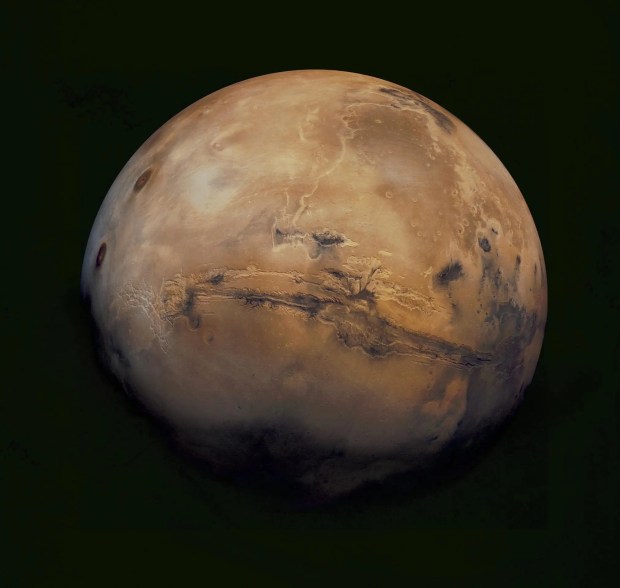
In movies, Matt Damon can grow potatoes on the Red Planet. But in reality, Mars is an extremely hostile environment. We know of only a single abode that suits fragile creatures like human beings well — right here on Earth. Mars has an atmosphere about 100 times more tenuous than our planet’s, and the mean surface temperature on our solar system next-door neighbor is about –80° F (–60° C). Even for someone who has spent most of his life in Wisconsin, like me, that’s chilly.
Mars has thrown planetary scientists its share of curves over the decades, too. Fueled by science fiction writing such as that of H.G. Wells and the imagined “canals” of Percival Lowell, humans almost expected a life-friendly paradise to appear along with the approach of the first spacecraft. But when the Mariner spacecraft approached Mars in the mid-1960s and orbited in 1971, a bit of a letdown occurred. The planet was obviously a barren, inhospitable wasteland.
Clues to Mars’ past began to trickle out, however. Beginning with the Viking landers and orbiters in 1976, it became starkly clear that Mars experienced a much wetter past. Subsequent missions like the Mars Reconnaissance Orbiter (MRO) have imaged and mapped countless regions of abundant, freely-flowing surface water. And now of course the surface of Mars and its thin atmosphere are vastly too cold to allow liquid water to exist. So what happened? Could there be lessons for our own planet from what happened on Mars?
Planetary scientists believe that Mars had a denser atmosphere during its first billion years, which certainly would have helped to keep water more abundant in it atmosphere, and prevent it from evaporating into space. Clearly, a series of events of climate change occurred on Mars that transformed it into a colder, drier planetary surface. The wet phase ended. From many sources, however, we know that Mars has abundant ices below its surface, and some ices in its polar caps. Imaging with MRO has mapped shallow craters of only 1 to 3 meters in depth with ices exposed at mid-latitudes. Studies of density mapping suggest that ices exist several kilometers below the martian surface, and ample evidence points to subsurface aquifers, which is the likely place where microbial life on Mars, if it does exist, would be found.
What is really striking from the countless images made by spacecraft orbiting the Red Planet, however, are the numerous areas where dry riverbeds, channels, valleys, gullies, and slopes show that large quantities of water once flowed freely on the planet’s surface. Liquid water would of course exist on the planet’s surface when the temperature is above 32° F (0° C), unless salt content would affect the liquid’s freezing point. But today, liquid water is unstable on the planet’s surface because the pressure would mean it would boil away, and rain would be impossible.
Today, temperatures on Mars are below freezing all over the planet, and so the martian ground is frozen. The planet’s polar ice caps vary in size and shape seasonally, always containing a substantial amount of ice. In wintertime, when such areas are shadowed, they contain plentiful amounts of carbon dioxide ice, which sublimates when temperatures warm. At high martian latitudes, the ground nearest the surface warms to a point greater than the frost point temperature, and is devoid of ice. From a few fractions of a meter to several kilometers deep, however, ice remains stable and exists abundantly.
The hunt for more and more evidence relating to martian water goes on. A large part of what drives this exploration is our understanding of living organisms, which as far as we know need a convenient solvent to exist, and water is the best one we know. Thus, more recent rovers, including Perseverance and Curiosity, focus in large part on regions that were once rich in the liquid.
One day, perhaps astronauts will be on Mars and will be able to drill down into the presumed subsurface aquifers and, in a very carefully controlled way (avoiding contamination), see if any microbes may exist. That would be an amazing moment for science.
For the near future, we will have to continue to study our close celestial neighbor to deepen our understanding of how a once-wetter, and somewhat warmer, planet, came screeching to an inhospitable halt. With our own climate change accelerating, carrying us into a warmer future, we had better glean all the lessons from planetary neighbors we can get.
David J. Eicher is Editor of Astronomy, author of 26 books on science and history, and a board member of the Starmus Festival and of Lowell Observatory.
